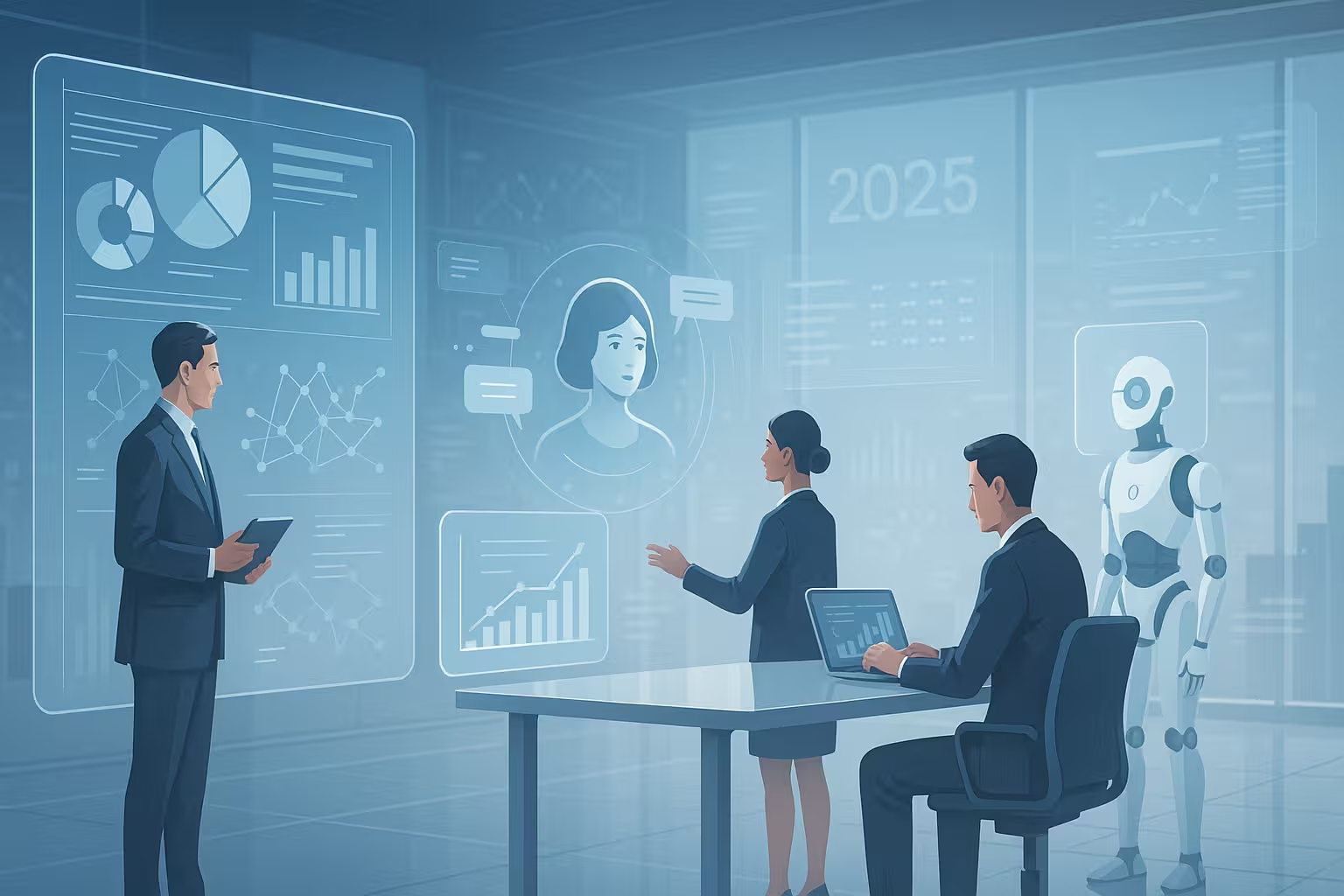Physical Address
304 North Cardinal St.
Dorchester Center, MA 02124
Physical Address
304 North Cardinal St.
Dorchester Center, MA 02124

Artificial Intelligence (AI) has moved from experimental labs into real-world applications, transforming how businesses operate, innovate, and serve customers. As we move deeper into 2025, AI tools are becoming essential across industries, from automating routine tasks to offering deep insights through data analysis. This article explores the top AI tools that are revolutionizing businesses today, with a focus on usability, impact, and future potential.
Before diving into specific tools, it’s important to understand the key characteristics that make an AI tool valuable in a business setting:
AI tools that streamline or eliminate repetitive tasks save time and increase operational efficiency.
Modern businesses rely heavily on data. AI tools that provide predictive analytics or real-time insights empower better decision-making.
The best AI tools grow with the business, supporting both small teams and large enterprises.
Seamless integration with existing software ecosystems is essential for smooth implementation.
Even powerful tools must be accessible to non-technical users.
Read Also: Government Employees May Get Over 30% Salary Hike Under 8th Pay Commission – Report

Primary Use: Natural language processing, content generation, customer support
Why It Matters:
ChatGPT, particularly with its 2025 update, has become a central tool for businesses looking to automate customer interactions, generate high-quality content, and perform language-based tasks like summarization and translation. Companies use it for everything from chatbots to internal knowledge assistants.
Key Features:
Use Case Example:
E-commerce platforms deploy ChatGPT for 24/7 customer service, reducing workload on human agents by up to 60%.
Primary Use: Marketing content creation
Why It Matters:
Jasper AI helps marketing teams generate blog posts, ad copy, email campaigns, and more. Its customizable tone and brand voice features make it ideal for maintaining brand consistency.
Key Features:
Use Case Example:
A digital marketing agency uses Jasper to create weekly blog content, cutting content production time by 70%.
Primary Use: AI-driven copywriting
Why It Matters:
Copy.ai offers quick and easy content solutions for product descriptions, social media posts, and sales copy. It’s particularly useful for startups and small businesses.
Key Features:
Use Case Example:
A SaaS startup uses Copy.ai to generate product landing pages, improving conversion rates significantly.
Primary Use: AI-enhanced writing assistance
Why It Matters:
GrammarlyGO brings contextual suggestions, tone detection, and rephrasing capabilities, making business writing more effective.
Key Features:
Use Case Example:
Legal teams use GrammarlyGO to refine contracts and reports, ensuring professional communication.
Primary Use: AI-generated visual content
Why It Matters:
For businesses in media, advertising, and design, Midjourney helps create high-quality images, illustrations, and conceptual artwork quickly.
Key Features:
Use Case Example:
An ad agency uses Midjourney to generate client mockups for campaigns, cutting visual development time by half.
Primary Use: Productivity and documentation
Why It Matters:
Notion AI adds automation and smart writing to the popular productivity platform, helping teams brainstorm, draft, and organize content more effectively.
Key Features:
Use Case Example:
Product teams use Notion AI to generate meeting notes and product specs on the fly.
Primary Use: Video and media editing
Why It Matters:
Runway ML brings advanced video editing powered by AI to non-technical users, revolutionizing how businesses produce content.
Key Features:
Use Case Example:
A marketing team uses Runway ML to create professional-level promotional videos without outsourcing.
Primary Use: AI-generated video with avatars
Why It Matters:
Synthesia lets businesses create training videos, tutorials, and presentations using AI avatars and voiceovers, eliminating the need for on-camera personnel.
Key Features:
Use Case Example:
HR departments create onboarding videos with Synthesia, providing a consistent and scalable training experience.
Businesses are leveraging AI with IoT devices for real-time monitoring in manufacturing, logistics, and healthcare.
AI tools can analyze user behavior and deliver ultra-targeted content and recommendations.
Companies are increasingly using AI to forecast revenue, expenses, and market trends with higher accuracy.
With growing concerns around AI bias and compliance, tools that audit and explain AI decisions are gaining traction.
Identify specific problems you want the AI tool to solve.
Check if the AI tool integrates well with your existing tech stack.
Start with pilot projects and evaluate results before large-scale adoption.
Ensure employees understand how to use the tools effectively.
AI tools in 2025 are not just about innovation—they are about practical transformation. From automating routine work to enhancing creative processes, these tools are helping businesses become faster, smarter, and more customer-focused. The key to success lies in choosing the right tools aligned with your goals and investing in training and integration. As AI continues to evolve, staying ahead means embracing these technologies and weaving them into your core strategy.
Whether you’re a startup or an enterprise, the AI revolution is here—and it’s time to lead, not follow.
Read Also: Shravan 2025: Key Dates, Significance, and Fasting Rituals Explained